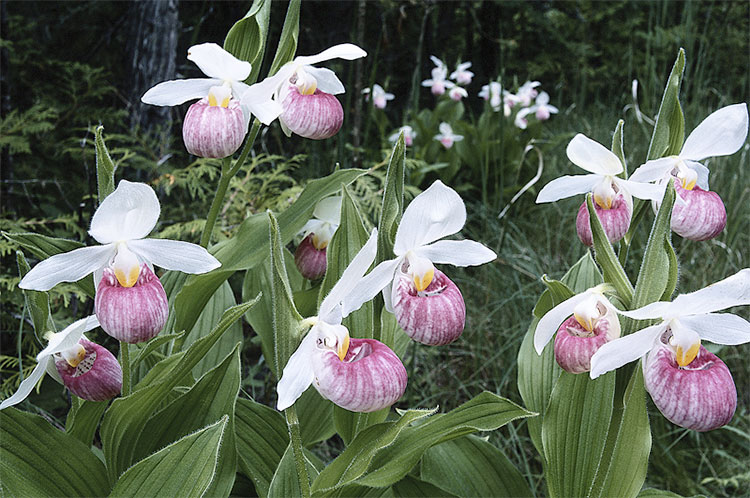• by Dr. Sarah Oktay, Director, University of Massachusetts Nantucket Field Station •
Spring has sprung and summer is almost upon us. Everywhere you look on island flowers are blooming, turtles are crossing the road, and insects are waking up to enjoy the warm sunny days. Several notable natural occurrences, many of which are linked to the weather and warming temperatures are the subject of this week’s column. I’d thought I’d hit the highlights and in the case of mosquitoes and for some people the Eastern Tent Caterpillar, the lowlights, of what to look for in nature this week. I have included links to past articles so that you can read more about each item if you wish and with this fantastic weather I hope you are doing so at the beach!
Scientists look for the rhythms of nature in blooming plants, animal migration, and larval development of insects in order to evaluate how the seasons are progressing. Phenology is the study of periodic plant and animal life cycle events and how these are influenced by seasonal and interannual variations in climate. It is something that is virtually impossible NOT to do here on Nantucket. The word is derived from the Greek phainomai, which means “to appear” or “come into view.” So we can see that phenology is specifically concerned with the dates of first occurrence of biological events in their annual cycle. I last wrote about this topic in 2010 and you can learn more at http://yesterdaysisland.com/2010/science/1-spring.php.
Everyone I have talked to this spring has commented on the huge occurrence of the Eastern Tent caterpillars (not gypsy moths, their scientific name is Malacosoma americanum (Fabricius, 1793). I wrote about these little guys just last year (http://yesterdaysisland.com/dang-it-i-am-not-a-gypsy-moth/) but this year I would say their population is at least ten times larger which makes sense as this year’s crop is based on the eggs laid last year. These creatures use polarizing light special effects, biochemical weapons and advanced scent trails as their secret weapons for making it to adulthood as a moth. I am sure you have seen these hideous bags of caterpillars wrapped around cherry and apple tree limbs, quickly defoliating the leaves during the day, and retiring to their baglike homes each night. On June 7th I saw a virtual stampede of them at Windswept Cranberry bog and most of the ones at the Field Station have just now fled their nests to generate their individual cocoons and pupate.
These caterpillars are very social, and in the early spring a cohort of newly hatched caterpillars (typically between 50-200 individuals) build a silk tent together, in which they live during their larval phase. When they are full-grown, larvae leave the host trees and disperse to form loose cocoons in protected places where they pupate. The adult moths (imagos) emerge about two weeks later. They are strictly nocturnal and start flying after nightfall, stopping to hang out and rest a few hours before dawn. Mating and oviposition typically occur on the same day the moths emerge from their cocoons; the females die soon thereafter (sad). If it is any consolation (obviously not for the moth), the Infestations tend to be cyclic in severity, worsening for several years until their populations crash to low levels, then slowly rebuild. A colony of Eastern tent caterpillars can quickly defoliate small ornamental trees, but trees usually recover with a new growth of leaves later in the year, since the species is univoltine (only has one generation per year). They are not responsive to most pesticides, so if you want to control them, just remove the branch they were on, or even better, look for their eggs and remove them (http://eol.org/pages/381885/overview),
The blue flag iris (Iris versicolor) is blooming now around the Nantucket Field Station Pond. These are also known as wild irises, harlequin blueflags, common blue flags, and northern blue flags. Look for them in swamps, marshes, and pond edges; the cranberry bogs are a reliable habitat for these late spring beauties. The Iris versicolor is an example of a rhizomatous plant which means it can reproduce using rhizomes underground. While vegetative reproduction is a convenient way for plants to spread, they may also depend on sexual reproduction. Insects attracted to the sepals (pretty parts) must crawl under the tip of a style and brush past a stigma and stamen, thus facilitating pollination. The combination of the two parents’ DNA creates genetic variation that has been shown to provide plant populations with resilience against predators and disease. I found a wonderful book with the longest title and subtitle (you thought that was a new phenomenon, apparently not!) called “ The Island of Nantucket: What it Was and What It Is, Being a Complete Index and Guide to this Noted Resort, Containing Descriptions of Everything On or About the Island in Regard to Which the Visitor or Resident May Desire Information Including (still going with the subtitle) Its History, People, Agriculture, Botany, Conchology, and Geology with Maps of the Town and Island” compiled by Edward K Godfrey in 1882 on Google books which lists both Iris versicolor and Iris Virginica as found on Nantucket.
They are almost gone but if you look quickly you may still see some lovely pink lady slippers (Cypripedium acaule) around the island. Please don’t pick any of these showy members of the orchid family as they are relatively rare and susceptible to deer browse and overharvesting by people. I recommend visiting this Nantucket Conservation Foundation blog entry to see a picture of this spectacular plant https://www.nantucketconservation.org/flora-overview/pink-ladys-slipper/.
Frost damage on scrub oak, bayberry and pretty much any other plant that was exposed (including poison ivy, yay!) can be seen in several low “valleys “or depressions around the island. These low spots are call frost pockets and I wrote about them in 2010 (http://yesterdaysisland.com/2010/science/13-hot.php). The frost occurred on the evenings of May 29th and 30th when the low temperature hit 42 and 40 degrees Fahrenheit respectively (average is 50 degrees). You might recall that the frost pockets themselves can be ten degrees cooler which is right at the freezing point. The lower areas off Polpis Road and around the island now show up as big brown patches as the unsuspecting and unprotected leaves of emerging plants were damaged. Hopefully you’ll take advantage of thousands of acres of protected conservation land on island and hike the trails while you look for these low spots.
Spotted, painted, and snapping turtles are heading to their nesting spots this week, so please keep an eye out for them on the road. On June 7th I came across 4 painted turtles crossing paths on the Land Bank Stump Pond trails and “scurrying” across Polpis Road. I last wrote about these cute little guys back on June 14, 2012, so they are right on time (http://yesterdaysisland.com/turtle-crossing/).
Also in the news are the arrival about a month ago of the horseshoe crabs which come up during May and June to breed. Look for them in Madaket and at the Creeks and around Coskata and other areas around the harbors. We are continuing the fifth year of horseshoe crab monitoring as are citizen science groups led by the Maria Mitchell Association and the Nantucket Conservation Foundation. I have written about these prehistoric creatures several times and you can find out more about them here http://yesterdaysisland.com/archives/science/6.php and http://yesterdaysisland.com/2011/science/5.php.
And of course it is mosquito season and we have had a few impressive rains bookended by relatively long dry spells and high tides, so it should be an interesting season. Past mosquito articles including ways to avoid their annoying bites can be found at http://yesterdaysisland.com/2008/features/mosquitoes.php and http://yesterdaysisland.com/2011/science/7.php. The Town of Nantucket has hired a professional company, Vector Disease ControI International (www.vdci.net) with trained entomologists (bug gurus) who are researching, monitoring, and treating island mosquitoes using safer biological controls. We will host a mosquito talk by Emily Hibbard, our on-island VDCI expert at the Field Station in a few weeks and I hope you’ll come join us. The Nantucket Field Station is also providing lab space to VDCI. AS you read these columns if you like to know more about a topic or would like me to cover something different, feel free to send me an email at sarah.oktay@umb.edu.



